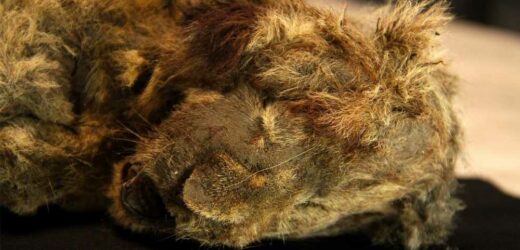More On:
mummies
Living history: Researchers get new look at ancient Egyptian animal mummies
Italian hospital uses CT scan to unveil secrets of Egyptian mummy
Mummified man left to decompose for 15 years inside ‘house of horrors’
2,000-year-old pregnant mummy discovery ‘shocked’ scientists
A 28,000-year-old lion cub mummy was discovered in Siberia — though it looks like it could have perished just yesterday.
Nicknamed Sparta, the cat’s golden fur covers a fully intact body with nary a wound or lesion, with eyes shut and claws still sharp, CNN reported.
The study of Sparta was led by Russian researchers Gennady Boeskorov and Alexey Tikhonov, whose report was just published earlier this month in the journal Quaternary, after the female cub’s discovery in 2017 by mammoth tusk hunters near eastern Russia’s Semyuelyakh River.
Findings on Boris, a male cub found approximately 50 feet from Sparta in 2018, were also included in their current study.
Originally presumed to be related, radio-carbon dating later revealed that the two cubs, both between 1 and 2 months old when they died, arrived at their shared final resting place on vastly different timelines. Boris, they found, is approximately 43,000 years old.
But the spotlight is on Sparta.
“Sparta is probably the best-preserved Ice Age animal ever found and is more or less undamaged apart from the fur being a bit ruffled. She even had the whiskers preserved. Boris is a bit more damaged, but still pretty good,” said Swedish researcher Love Dalén, of the Center for Palaeogenetics in Stockholm, who co-authored the international study.
Neither Sparta nor Boris are thought to have been killed by a predator. However, various skeletal damage was noted in computed tomography scans. Dalén told CNN, “Given their preservation, they must have been buried very quickly. So maybe they died in a mudslide, or fell into a crack in the permafrost.”
The two cubs represent an ancient species called cave lions that roamed the harsh tundras of the Northern Hemisphere during the Ice Age. Known to grow slightly larger than today’s African lion, little is known about how these big cats survived such an extreme habitat.
Sparta’s discovery was predated by the news of Dogor, an 18,000-year-old canine puppy also from the Yakutsk region in Siberia, whose remains were similarly intact and well-preserved. But despite its pristine mummification its true identity has continued to elude scientists: Is it a wolf or a dog?
Dalén predicts more discoveries like this will be made in the near future, pointing to climate change as well as “increased demand for mammoth ivory” as the source.
“There are definitely more finds being made these days,” said Dalén.
Share this article:
Source: Read Full Article





